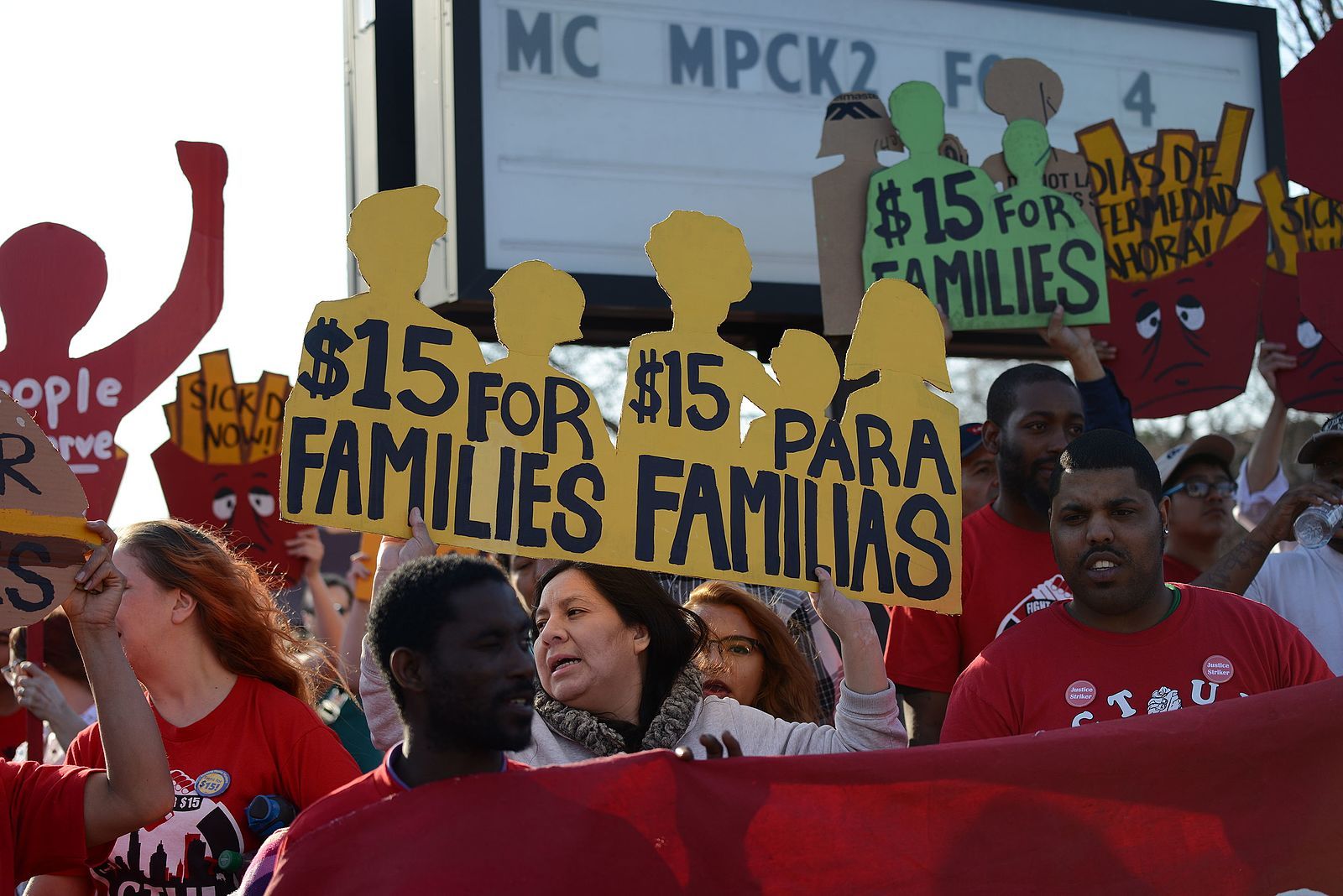Once you’ve successfully organized your workplace, it’s time to negotiate your first union contract! Union contracts are negotiated in bargaining sessions but are won by the resolve and unity of the full membership.
Building a representative committee
The bargaining unit, made up of you and your coworkers, nominates or elects a bargaining committee to represent the full membership throughout the process. A representative bargaining committee is demographically diverse and includes members from key departments/team, positions, and locations. The bargaining committee figures out how to divide the work internally, including the role of lead negotiator (typically union staff or outside counsel). Units with larger membership or that expect a hard fight may use a dual structure of a table team and a contract action team (CAT). Table team members attend bargaining sessions with management and work with CAT members to organize actions necessary to win a strong contract (everything from petitions to public rallies).
Bargaining sessions
Representatives from management and unions communicate to schedule dates for bargaining sessions; a typical session is a few hours and held every few weeks. In most sessions, representatives from each side formally present a proposal or verbally discuss their responses. Though blocks of time are reserved for a typical session, it’s not unusual to spend more time in caucus than in the actual session. In bargaining, caucus time is when each side goes to their own rooms to debrief and plan counter proposals.
In caucus, the lead negotiator works with members to determine who will respond and how to ensure that the committee presents a united front. Seriously, keep a poker face! You don’t want to discourage management from offering more or show that there is a wedge in the committee (or the unit) that they can exploit.
Typically, sessions are limited to the union and management bargaining committee members. However, as the process progresses it can be extremely useful to have open sessions and invite members of the bargaining unit to attend. This shows management that people are united and it can help to get unit members riled up for a fight.
Know your membership
Bargaining committee members should go into sessions knowing what the people they represent do and don’t want, and what they are willing to do to get it. Clear assessments are based on direct conversations, not assumptions. When committee members report back specifics (eg: 90% of my department sees annual raises as our top priority) they can make an informed decision of when and how to counter a management proposal, accept an offer, or continue to agitate for more.
Bargaining committee members play a crucial role in advocating for unit priorities but they can’t win a contract alone. Contract campaigns build collective power by steadily increasing the pressure through escalating actions. Effective contract campaigns gradually build up the heat from, “we’re so excited for our first bargaining session” to “fair contract now.” (example from twitter)
BREAKING: The New Yorker Union has voted 98% in favor of authorizing a strike. We stand with our @condenast colleagues in @pk4union and @ars_union, which have also overwhelmingly authorized a strike. Our statement: pic.twitter.com/4EOxWFxCUu
— The New Yorker Union (@newyorkerunion) March 26, 2021
Just miles down the road from Amazon’s Bessemer warehouse, more than a thousand mine workers have been on strike.
— More Perfect Union (@MorePerfectUS) April 8, 2021
The workers at Warrior Met Coal do have a union, and they’re standing together to demand fair pay and working conditions. pic.twitter.com/dutBDrYcq7
Solidarity is an action
Management may try to divide the bargaining committee from the rest of the unit. Internal workplace actions - like wearing buttons or t-shirts during a shift - show bosses that workers are sticking together. Starting with smaller actions helps you assess where your coworkers are at. If only 50% of the unit is willing to sign a petition in support of a proposal during bargaining, you know that you have more work to do to build up internal resolve and consensus within the membership. This may not be an issue that the unit feels strongly enough to take action over, or maybe you need to do more one-on-one outreach before moving forward with the petition.
Building a contract campaign is like training for a marathon - you don’t go from sitting on the couch everyday to magically running 20-something miles. A strong unit can endure attacks from managers and remain strong. You also don’t want to use up all of your strongest tactics at the very beginning. It’s crucial to assess every step of the way, asking: how is management responding and are we making progress on our demands?
Examples of escalating actions:
- Button day - every member wear a union button on the day of bargaining sessions
- Support pledge - bargaining committee members deliver a pledge signed by (ideally) all unit members to management’s negotiating team
- March on the boss - members deliver a petition to the boss during working hours
- Hold a public protest or informational picket
- Work stoppages - one day walkout or a longer strike


Know your leverage
You’re trying to win something specific so don’t just lash out. Actions and campaign decisions should align with the overall goal. In other words, make clear what you want and who you need to convince to give it to you. You might start by researching decision-makers like board members and CEOs and brainstorm how to influence them. Find out if they care about their public image. All unit members should be on the lookout for events and strategic opportunities to show solidarity and pressure decision-makers. For example: be present and vocal at all-staff meetings, when important donors or clients are visiting the worksite, during important product launches, or during the holidays or busy times.
Setting a contract
The goal is to win as much as possible based on member priorities, but the contract is the product of negotiations and both sides expect to compromise. Toward the end of the process, bargaining sessions will likely go well into the night. Eventually, the bargaining committee will make a determination that they’ve gotten as much as they possibly can and that action options and leverage have been exhausted. At that point, the committee will present the unit with a tentative agreement (TA) for a membership vote. The contract goes into effect only if it is ratified, which happens when a majority vote of the membership says “yes” to it.
Go, fight, win!
Winning a strong union contract requires a representative bargaining committee in regular communication with unit members, as well as a plan to steadily exert pressure on the employer.
It’s not just about getting to the finish line (the contract). Everything in such a fight is is an opportunity to build your union for the long haul.



